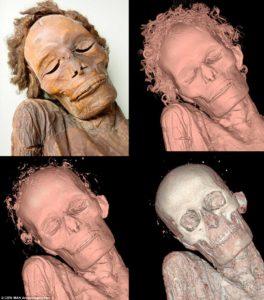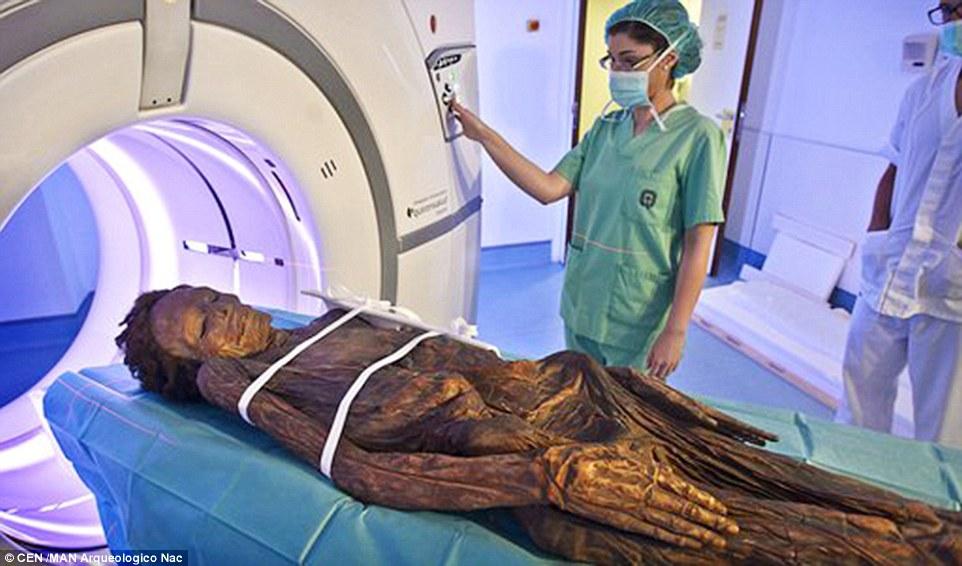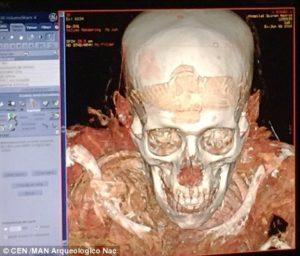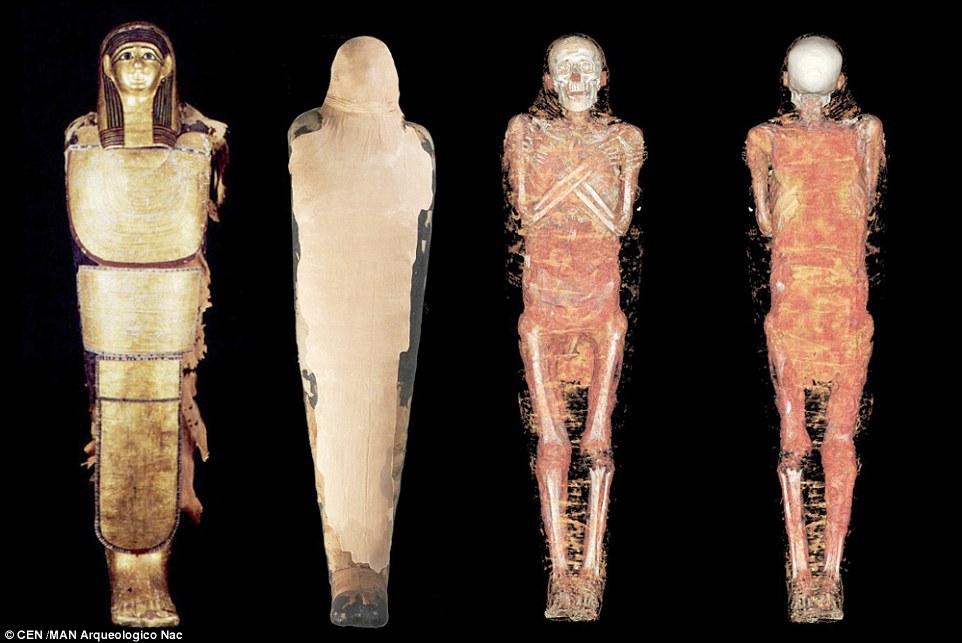 There is something almost magically fascinating about mummies. Apart from the somewhat macabre notion that you are staring at the wrappings of a dead body, there are notions of the whispered secrets contained within and a connection to a desire for eternity that is irresistible to so many people. Mummy exhibits at museums are supremely popular and nearly every child has gone through a phase in her/his life when they hear the call of Ancient Egypt.
There is something almost magically fascinating about mummies. Apart from the somewhat macabre notion that you are staring at the wrappings of a dead body, there are notions of the whispered secrets contained within and a connection to a desire for eternity that is irresistible to so many people. Mummy exhibits at museums are supremely popular and nearly every child has gone through a phase in her/his life when they hear the call of Ancient Egypt.
During the Victorian era, people were no less fascinated with these bundles from the past and those with a particularly strong interest, and the funding to engage it, would either host or participate in elaborate mummy unwrapping parties in a misguided effort to learn about the bodies within. Luckily, for mummies and for us, it is no longer necessary to engage in such invasive procedures in order to glean knowledge of the contents of these ancient bandaged bodies.
 With the development of CT scan technologies, the image of what lies beneath the surface has been becoming clearer and clearer. In addition, the quality of the data collected and the 3D images that can be created have been increasing in leaps and bounds. As such, Spanish archaeologists and doctors recently decided to take a peek behind the outer layers of four mummies that were housed in the National Archaeological Museum in Madrid. Driven by more than just base curiosity, the researchers hold high hopes that the information gathered will provide unique insight into the lives, deaths, and mummification processes of the bodies and their cultures.
With the development of CT scan technologies, the image of what lies beneath the surface has been becoming clearer and clearer. In addition, the quality of the data collected and the 3D images that can be created have been increasing in leaps and bounds. As such, Spanish archaeologists and doctors recently decided to take a peek behind the outer layers of four mummies that were housed in the National Archaeological Museum in Madrid. Driven by more than just base curiosity, the researchers hold high hopes that the information gathered will provide unique insight into the lives, deaths, and mummification processes of the bodies and their cultures.
 Three of the mummies hail from Egypt, a 2,300-year-old adult male and two females, but one of them is of Guanche origin and represents one of the best preserved mummies in existence. The Guanche were a cave dwelling, aboriginal people who inhabited the Canary Islands, and represent the only known group of indigenous people to have lived in the Macronesian Islands before the arrival of Europeans. They practiced mummification on a very refined level and a number of Guanche mummies are in museum collections around the world. This particular mummy was discovered in 1776 in Tenerife. Unfortunately, some of the primary sites for Guanche mummies have been looted, and so those that remain are of great interest for study.
Three of the mummies hail from Egypt, a 2,300-year-old adult male and two females, but one of them is of Guanche origin and represents one of the best preserved mummies in existence. The Guanche were a cave dwelling, aboriginal people who inhabited the Canary Islands, and represent the only known group of indigenous people to have lived in the Macronesian Islands before the arrival of Europeans. They practiced mummification on a very refined level and a number of Guanche mummies are in museum collections around the world. This particular mummy was discovered in 1776 in Tenerife. Unfortunately, some of the primary sites for Guanche mummies have been looted, and so those that remain are of great interest for study.
 The mummies were transported with great care from the museum where they are normally housed to the Hospital Universitario Quirónsalud Madrid in order to be examined with the latest in cutting edge scanning technology. The team included doctors Martinez de Vega, Javier Carrascoso and Silvia Badillo Rodriguez-Portugal, as well as Egyptologist Carmen Perez Die, Teresa Gomez Espinosa and Esther Pons. The entire process was filmed as part of a documentary set to be released next year from RTVE. And while we don’t yet know what discoveries may have been made or theories confirmed, this understanding of the benefits that advanced 3D scanning technology can provide to those studying the ancient dead is becoming increasingly common. This eager adoption of available technology was explained by Egyptologist Carmen Perez Die:
The mummies were transported with great care from the museum where they are normally housed to the Hospital Universitario Quirónsalud Madrid in order to be examined with the latest in cutting edge scanning technology. The team included doctors Martinez de Vega, Javier Carrascoso and Silvia Badillo Rodriguez-Portugal, as well as Egyptologist Carmen Perez Die, Teresa Gomez Espinosa and Esther Pons. The entire process was filmed as part of a documentary set to be released next year from RTVE. And while we don’t yet know what discoveries may have been made or theories confirmed, this understanding of the benefits that advanced 3D scanning technology can provide to those studying the ancient dead is becoming increasingly common. This eager adoption of available technology was explained by Egyptologist Carmen Perez Die:
“They are very important pieces and I am looking forward to beginning this new way of studying them with which we will learn many new things about them that until now we could not access.”
Discuss this amazing project further in the 3D Printed Mummy forum over at 3DPB.com.
[Source: Daily Mail/ Images: CEN/Museo Arqueológico Nacional via Daily Mail]
Subscribe to Our Email Newsletter
Stay up-to-date on all the latest news from the 3D printing industry and receive information and offers from third party vendors.
Print Services
Upload your 3D Models and get them printed quickly and efficiently.
You May Also Like
Consolidation in AM: How 2025 Is Shaping the Industry’s New Normal
The first half of 2025 has been marked by a clear shift in the additive manufacturing (AM) industry. Companies are no longer just focused on developing new tech by themselves....
Etsy Design Rule Change Reduces Selection of 3D Printed Goods
Online marketplace Etsy has implemented a rule change requiring all 3D printed goods on the site to be original designs. The update to the site’s Creativity Standards states, ¨Items produced using...
U.S. Congress Calls Out 3D Printing in Proposal for Commercial Reserve Manufacturing Network
Last week, the U.S. House of Representatives’ Appropriations Committee moved the FY 2026 defense bill forward to the House floor. Included in the legislation is a $131 million proposal for...
Transforming From Tourist to Native: Duro CEO Michael Corr Explains Why the Company Rebuilt its PLM Software on AI
In these early innings of the AI boom, many market analysts have expressed concern that AI spend has gotten too far ahead of the technology’s proven ability to deliver significant...
































